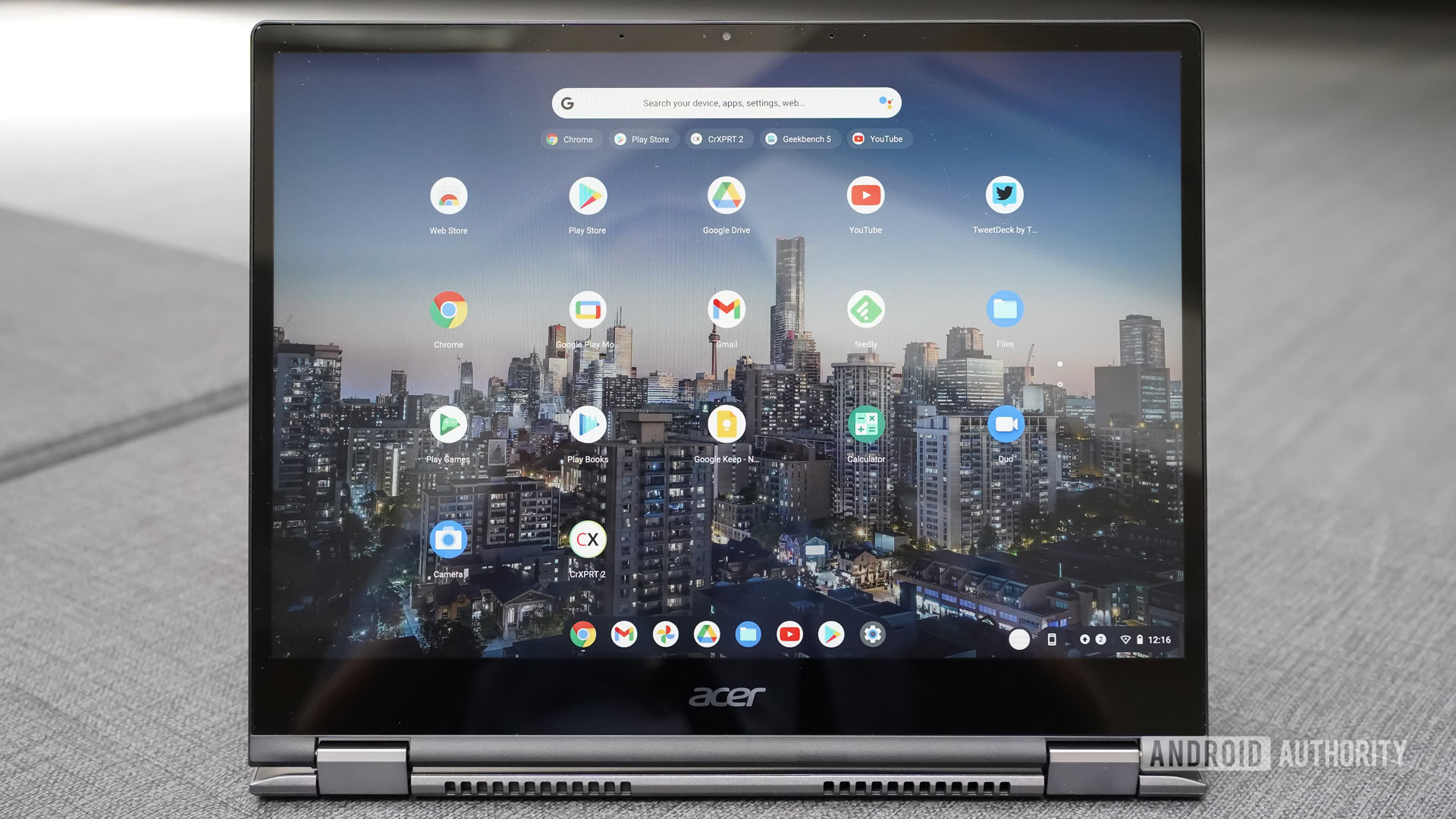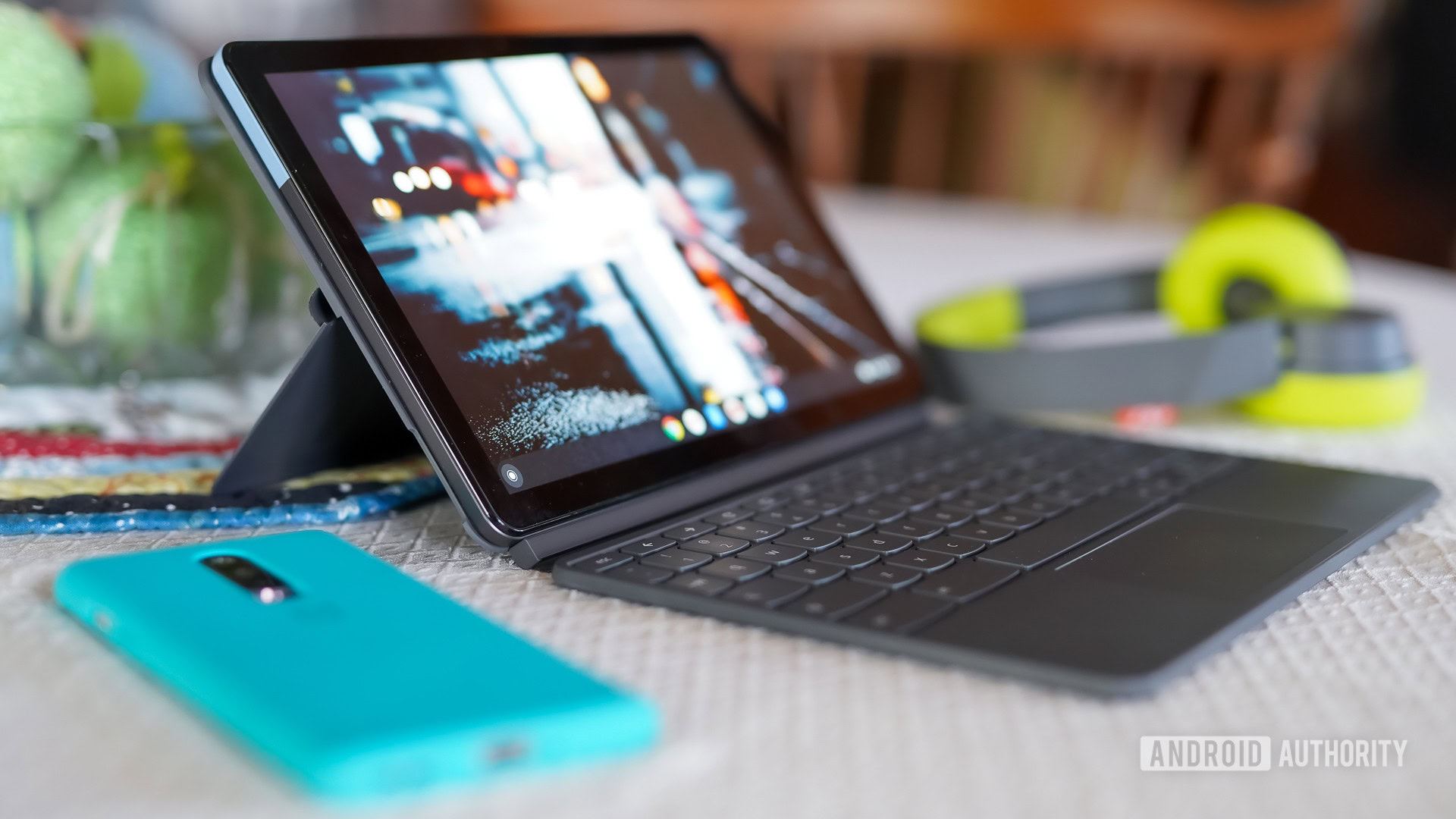Affiliate links on Android Authority may earn us a commission. Learn more.
How to turn on Chrome OS Developer Mode on your Chromebook
Chrome OS devices are getting more powerful and capable, allowing for a pretty good (albeit simple) PC experience. If you want to go beyond the basic capabilities of your Chromebook, though, you’ll have to enable Chrome OS Developer Mode. This post will explain exactly how to do that, and what to be aware of.
Warning: Remember that enabling Chrome OS Developer Mode opens up your Chromebook to abilities that aren’t officially supported. Make sure to research anything you want to try, and keep in mind that unsupported and experimental features can cause problems. The responsibility falls only upon you if something happens to your software or hardware.
QUICK ANSWER
To enable Developer Mode on a Chromebook, press and hold Esc + Refresh, then press the power button. Go to Advanced options > Enable developer mode > Confirm > Boot from internal disk > Boot from internal disk. When done, the Chromebook will show the setup screen. Follow instructions.
JUMP TO KEY SECTIONS
Editor’s note: We used an ASUS Chromebook Vibe CX34 Flip running Chrome OS version 122.0.6261.100 to formulate these steps. Some steps may slightly change if you’re using a different device and software version.
What is Chrome OS Developer Mode, anyway?

Chrome OS Developer Mode is similar to gaining root access on your Android device. It gives you more control over your Chromebook, and it’s a great option for those who love tweaking their devices.
Developer Mode isn’t for everyone, since it has several drawbacks, which we’ll get to later. But if you want to gain root access to the Chrome OS file system to do things like sideload Android apps or install an additional OS, Developer Mode is your only option.
How to enable Chromebook Developer Mode

First, make sure you back up and save any important files stored on your device. Enabling Developer Mode wipes all locally stored data, which can’t be restored. It’s the same as factory resetting your Chromebook.
- Press and hold the Esc + Refresh keys, then push the power button.
- Use the arrow keys to navigate to Advanced options. When highlighted, press enter.
- Use the arrow keys to highlight Enable developer mode and press enter.
- Highlight Confirm and press enter.
- Some Chromebooks may require you to turn OS verification off. Press Enter (if required).
- The device will restart, and you will see a screen that reads, “You are in developer mode.”
- Highlight Boot from internal disk and press enter.
- Wait for the device to restart. This might take a while, as the machine’s software will transition to Developer Mode.
- You will get the “You are in developer mode screen” again. Keep in mind this screen will show every time you boot up.
- Highlight Boot from internal disk and press enter (yes, again).
- When ready, go through the Chromebook setup process.
How to disable Chrome OS Developer Mode

As easy as it is to enable Developer Mode, it’s simpler to disable it, albeit still time-consuming. Remember to back up your data once again, as disabling Developer Mode also erases everything from your Chromebook.
- Next time you restart your Chromebook, you will be welcomed by the “You are in developer mode” screen.
- Highlight Return to secure mode using the arrow keys, and press enter.
- Press enter on Confirm.
- The device will power off, and Chrome OS will start transitioning from Developer Mode to Secure mode.
- When done, the Chromebook will restart, and you will be welcomed by the setup process.
Drawbacks of enabling Developer mode
While there are advantages to enabling Developer Mode that we’ve already touched on, Developer Mode certainly isn’t for the average person, and some technical know-how is needed to exploit it. If you’re not comfortable with the disadvantages below, stay clear.
- Google doesn’t support Developer Mode, so you’ll be on your own if you run across any issues, and may be at risk of voiding your device’s warranty.
- All security features are disabled when Developer Mode is turned on.
- You lose your local data when enabling or disabling Developer Mode. There’s a particular risk when disabling it, since an accidental press of the Spacebar at the wrong time is all you need to lose your data once again. Making continuous backups if you’re working on something important is recommended.
- Chromebooks normally boot up extremely fast, which is a feature you lose when Developer Mode is enabled. You’ll have to see a warning screen whenever you switch on the device.
FAQs
Developer Mode requires you to turn off OS verification in most cases, making it inherently unsafe. You should only use the mode if you’re sure what you’re doing.
To install an APK without Developer Mode, you can install Linux on your Chromebook, set up ADB, and use the Terminal to install the APK manually.
Enabling Developer Mode on a school Chromebook is tough, and we don’t recommend it unless you have prior permission. You’ll have to disassemble the Chromebook, disconnect the battery from the motherboard, and press the power button for 30 seconds. Then, you’ll need to follow the method we’ve explained in this guide.
You’re still likely to be met with a software lock that won’t let you bypass administrative restrictions, and if you can’t put a Chromebook back the way it was issued to you, you could be in a world of trouble.